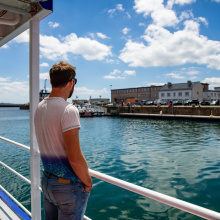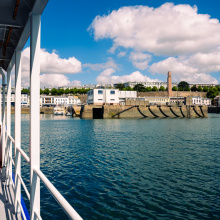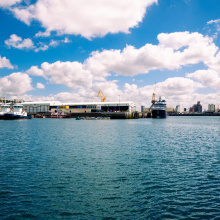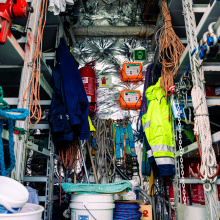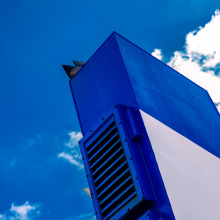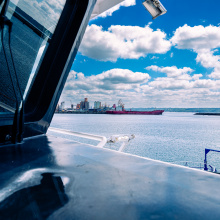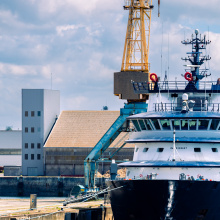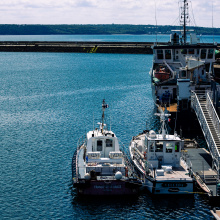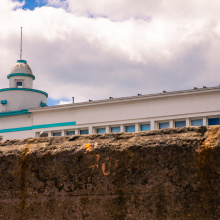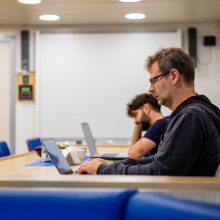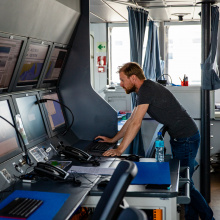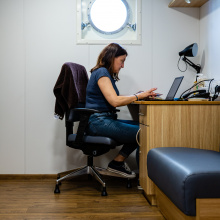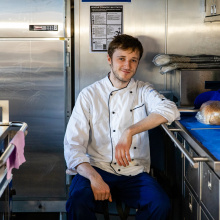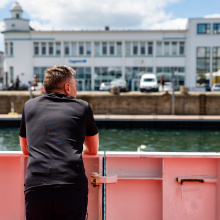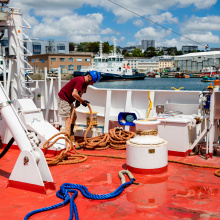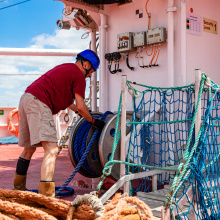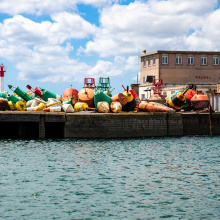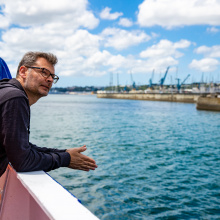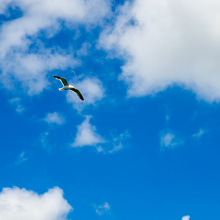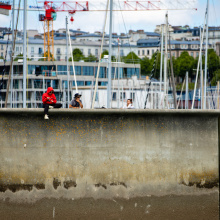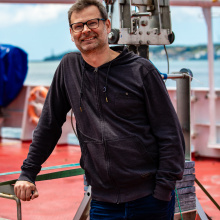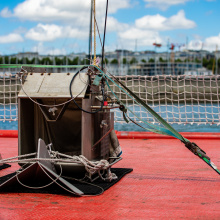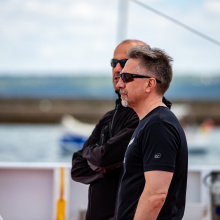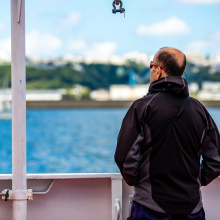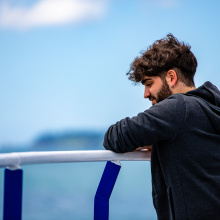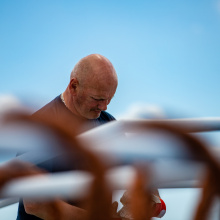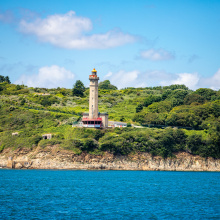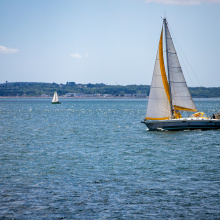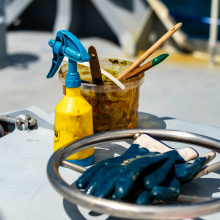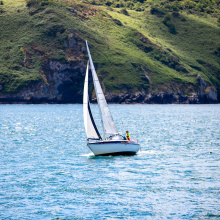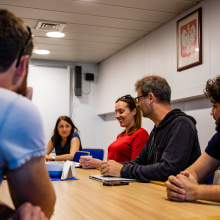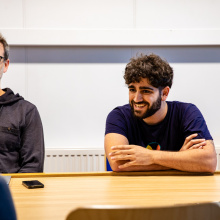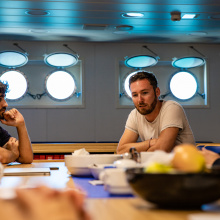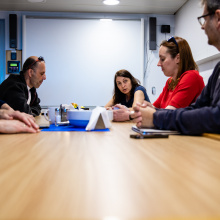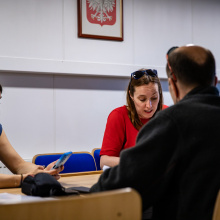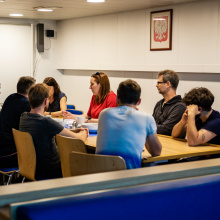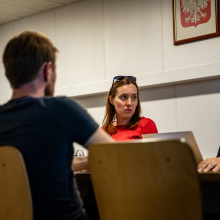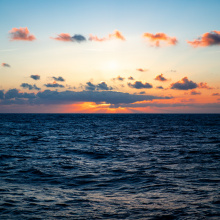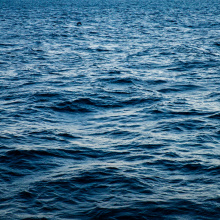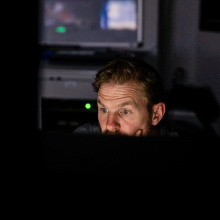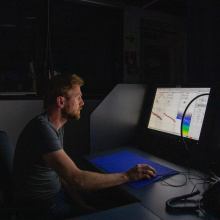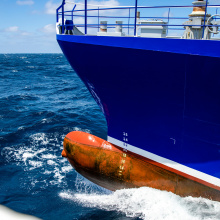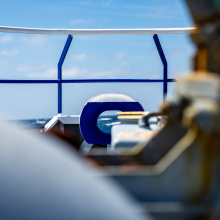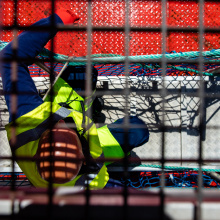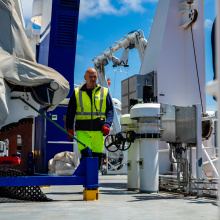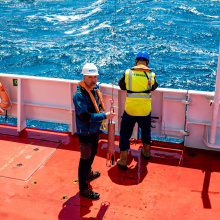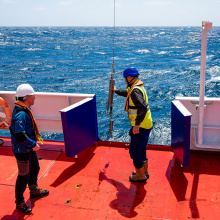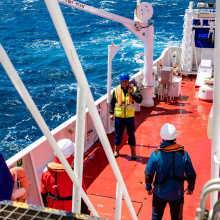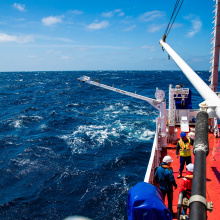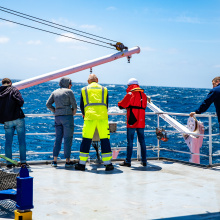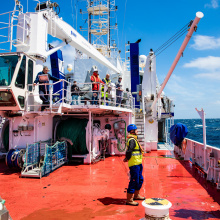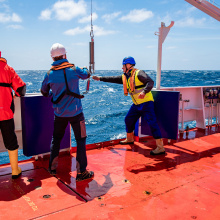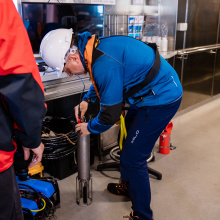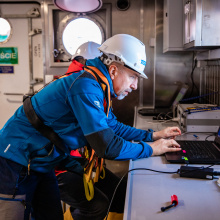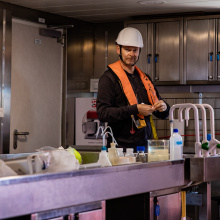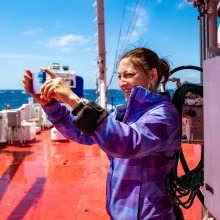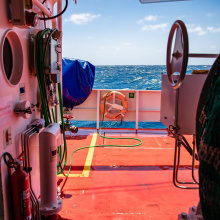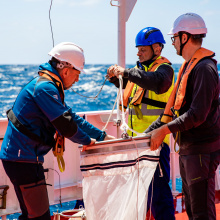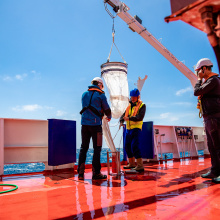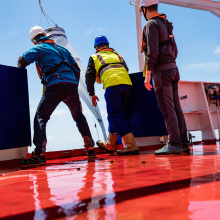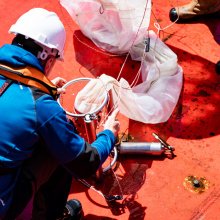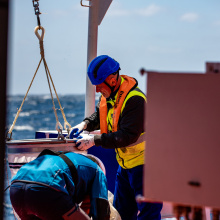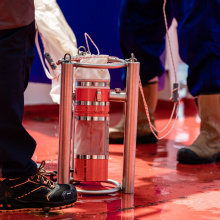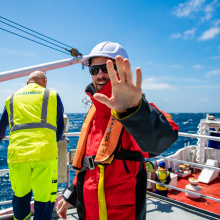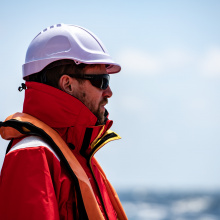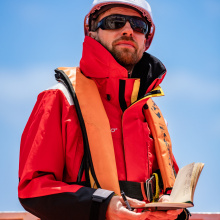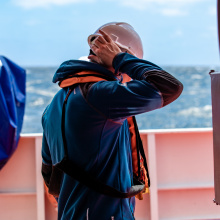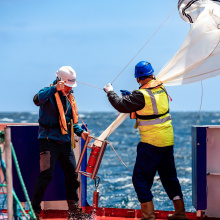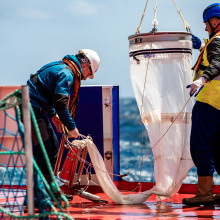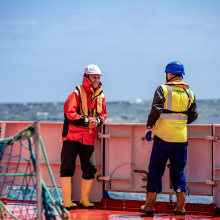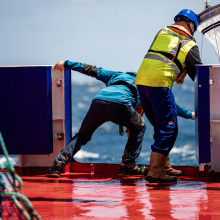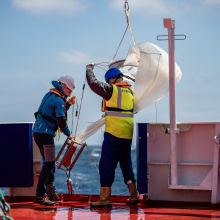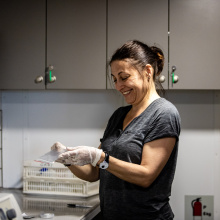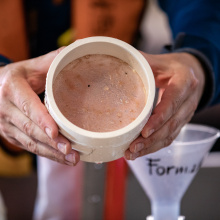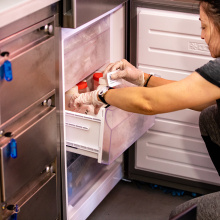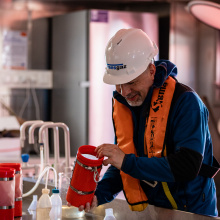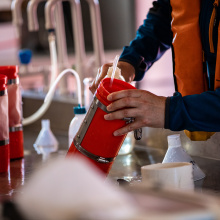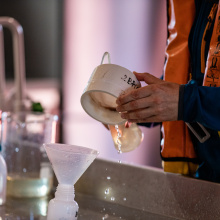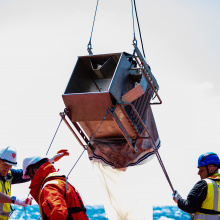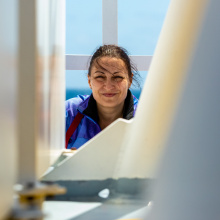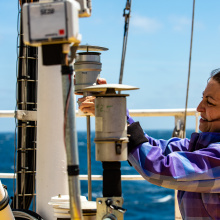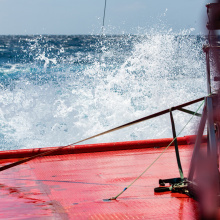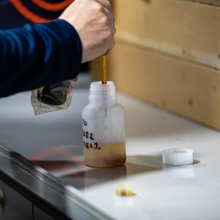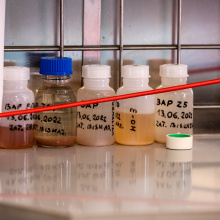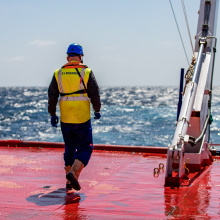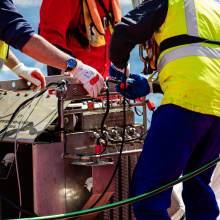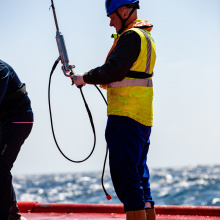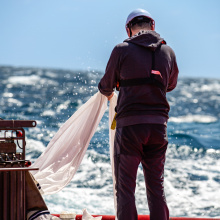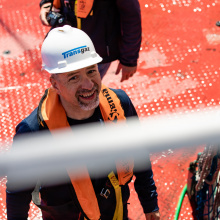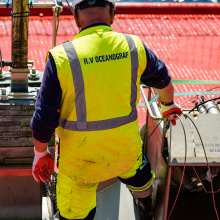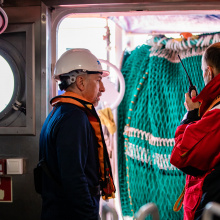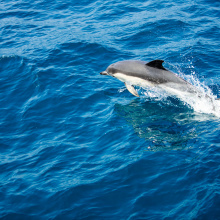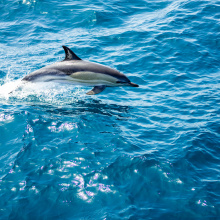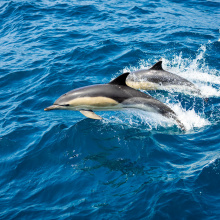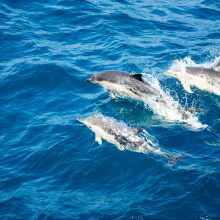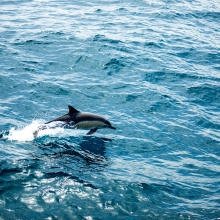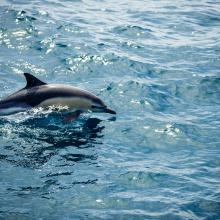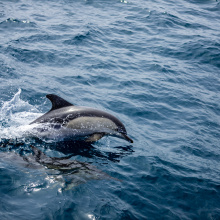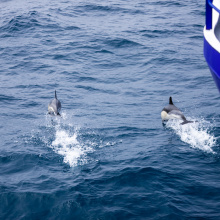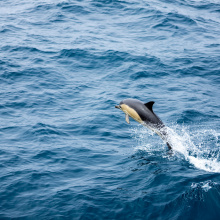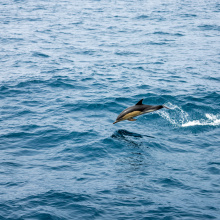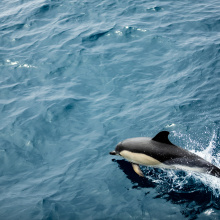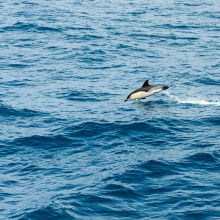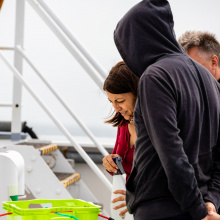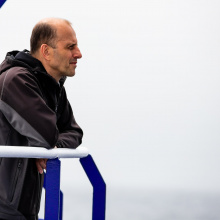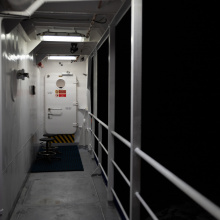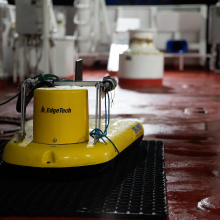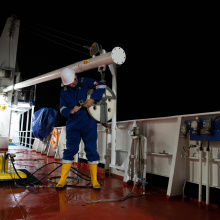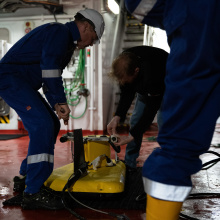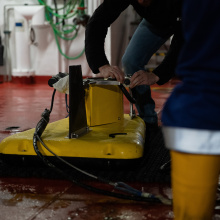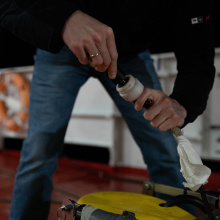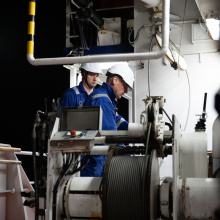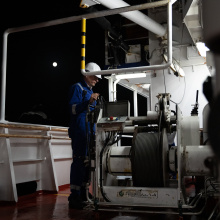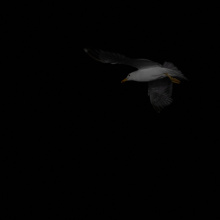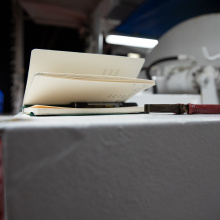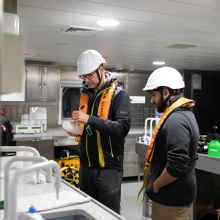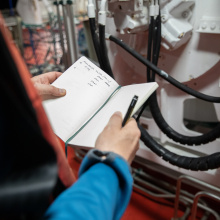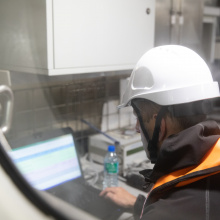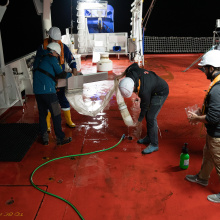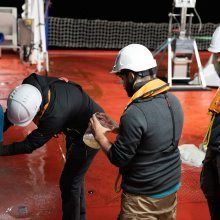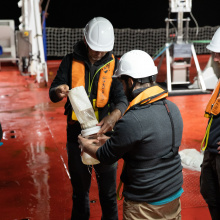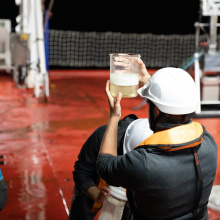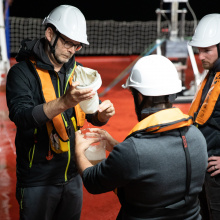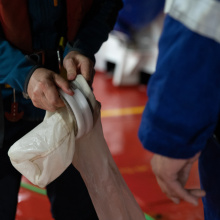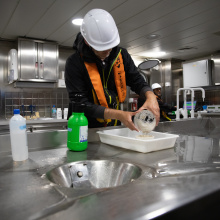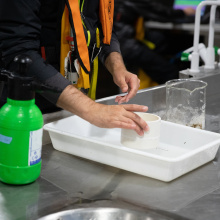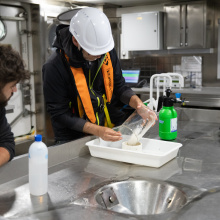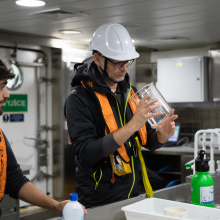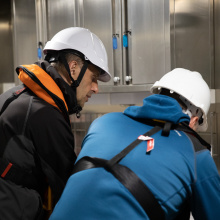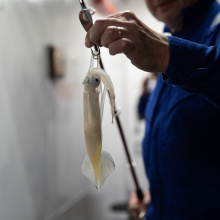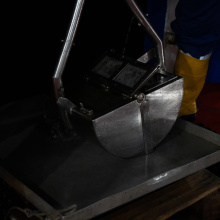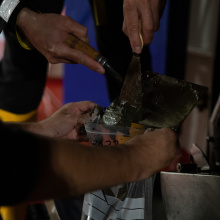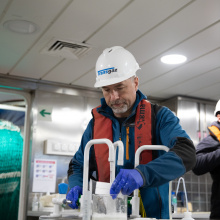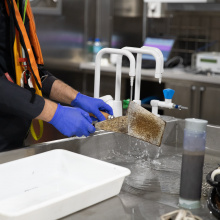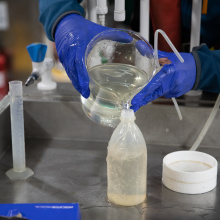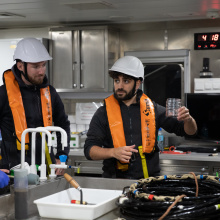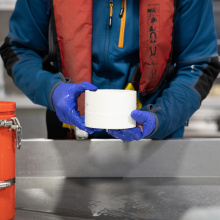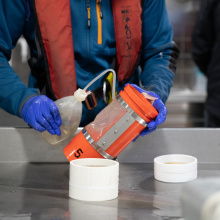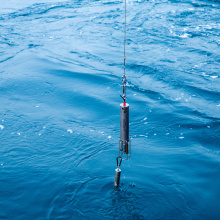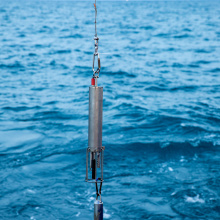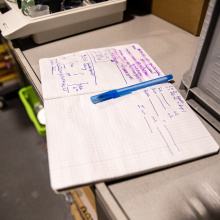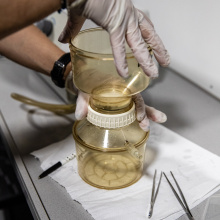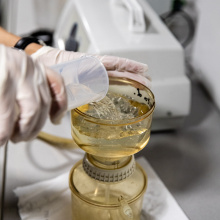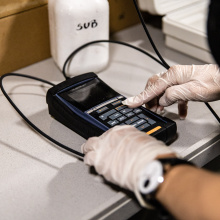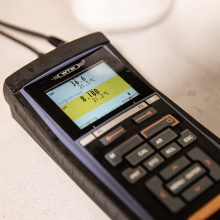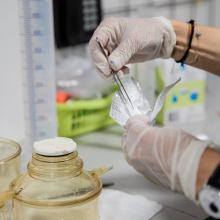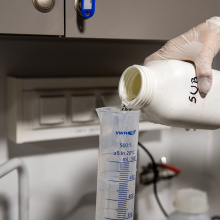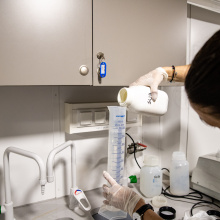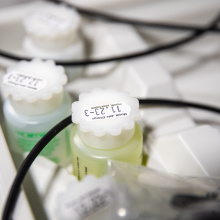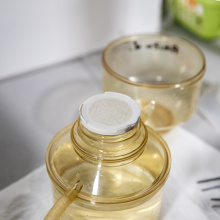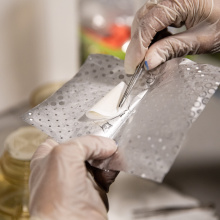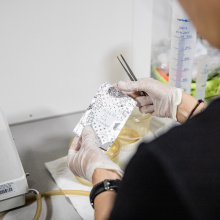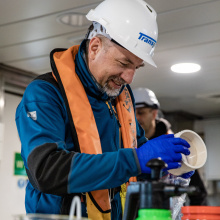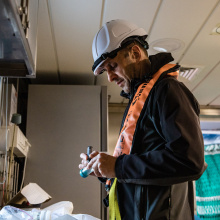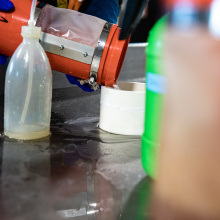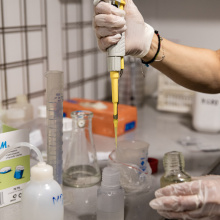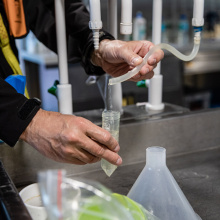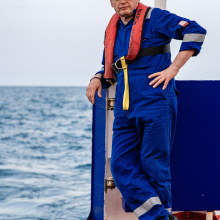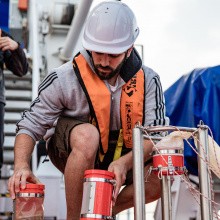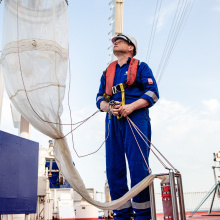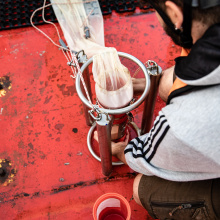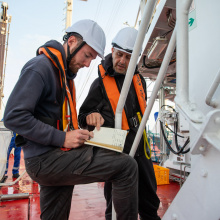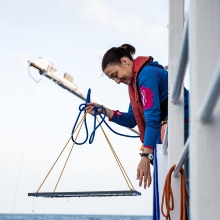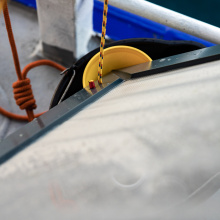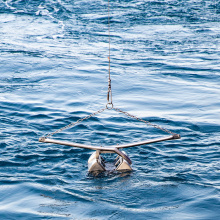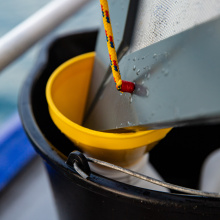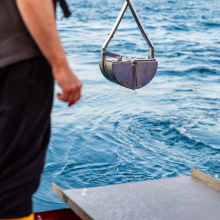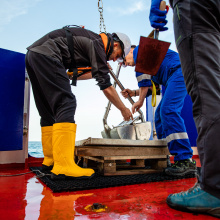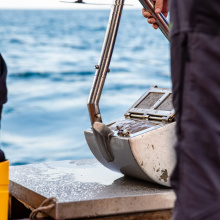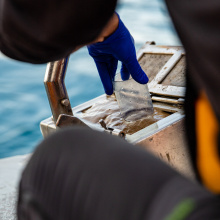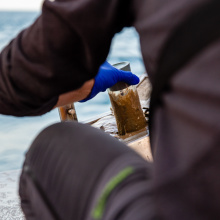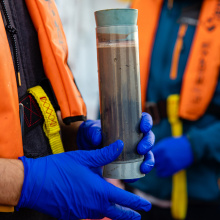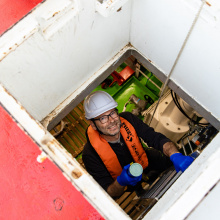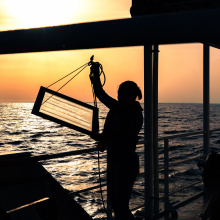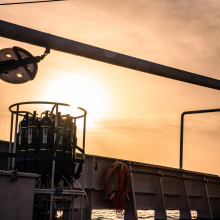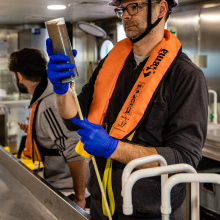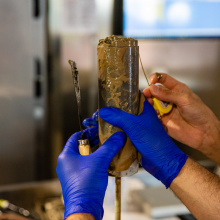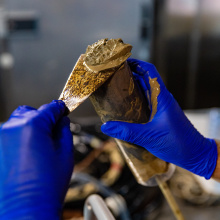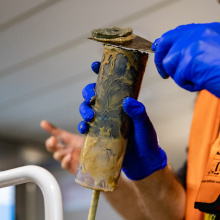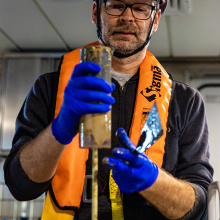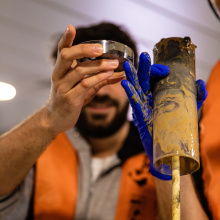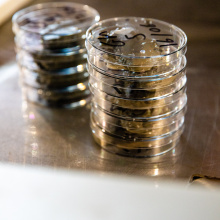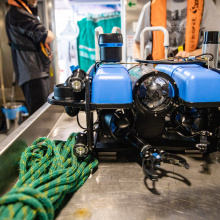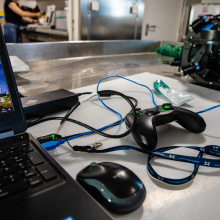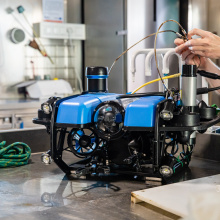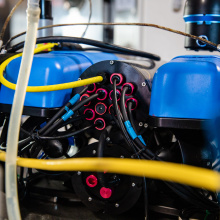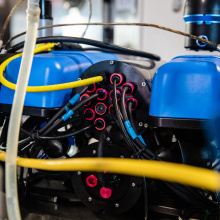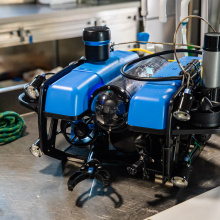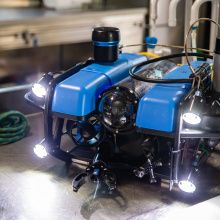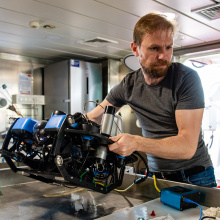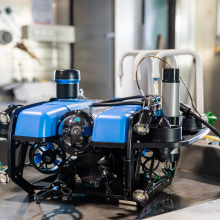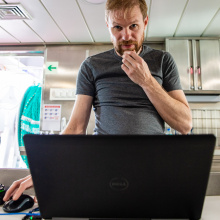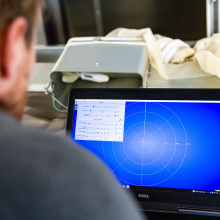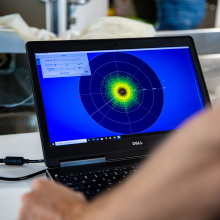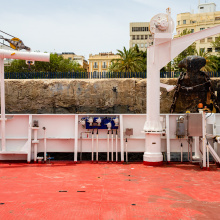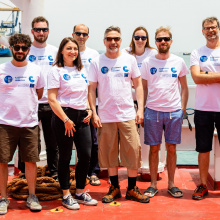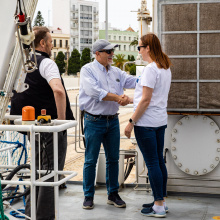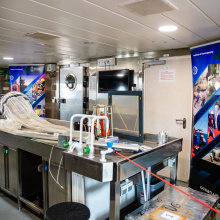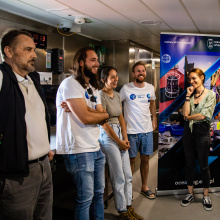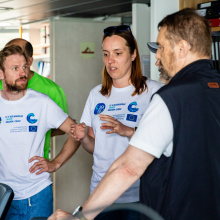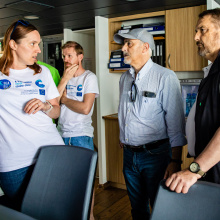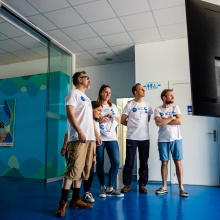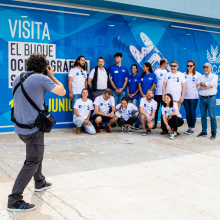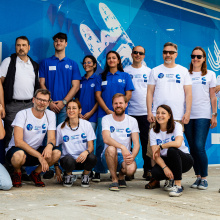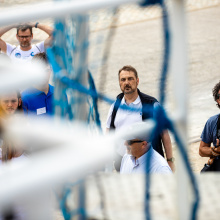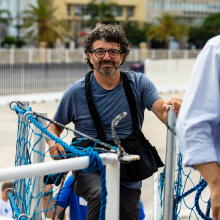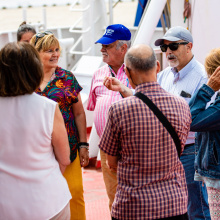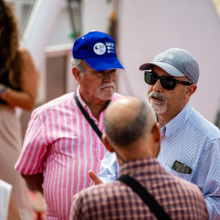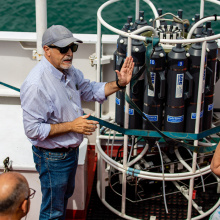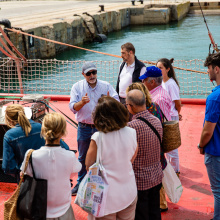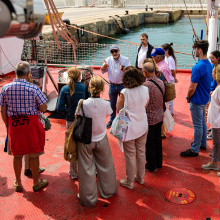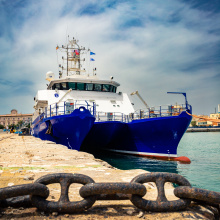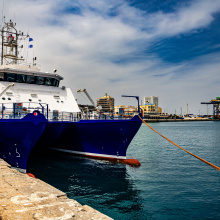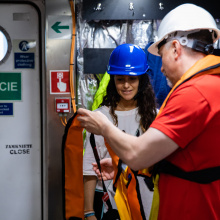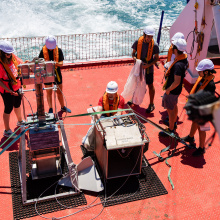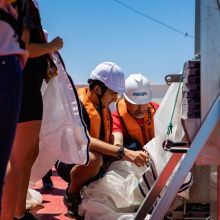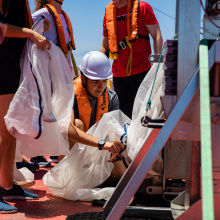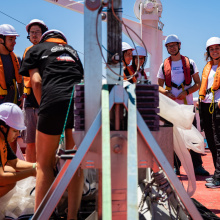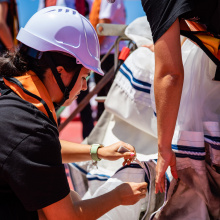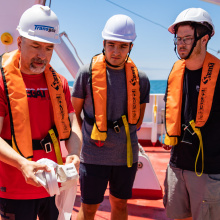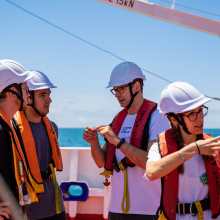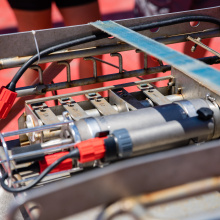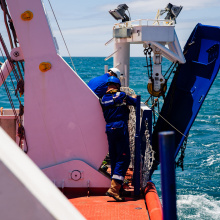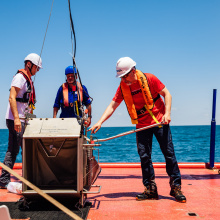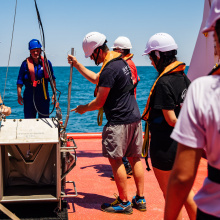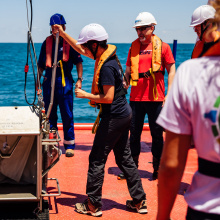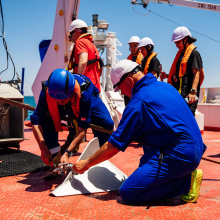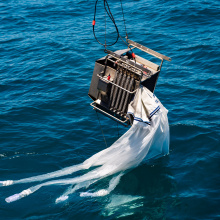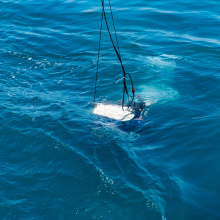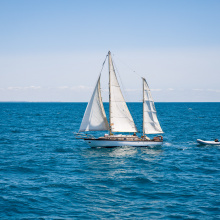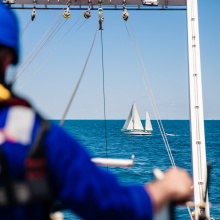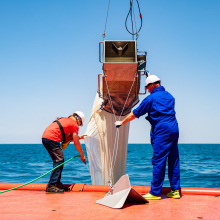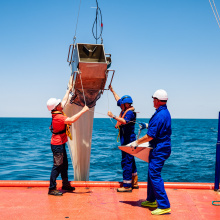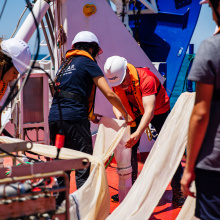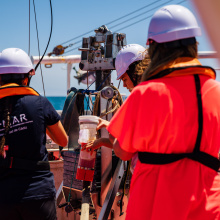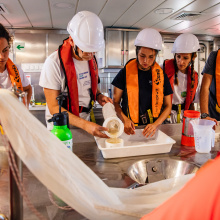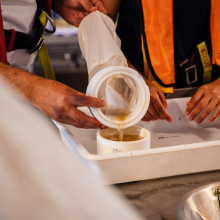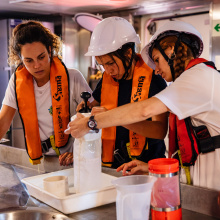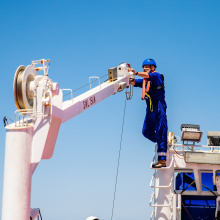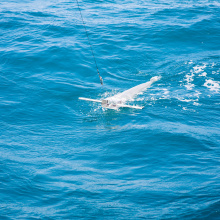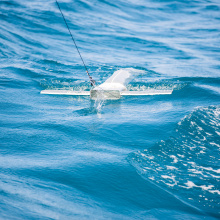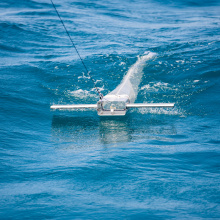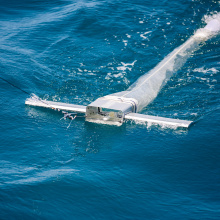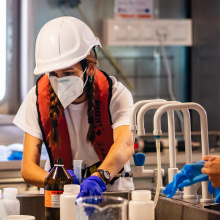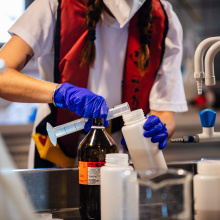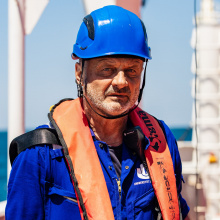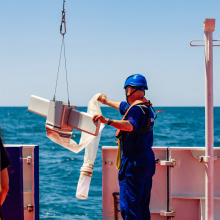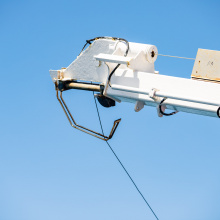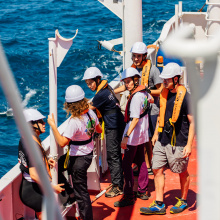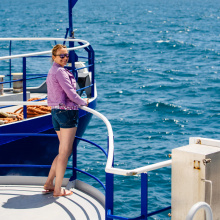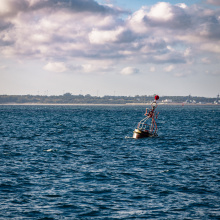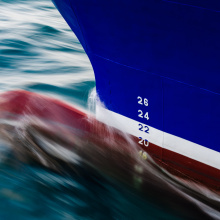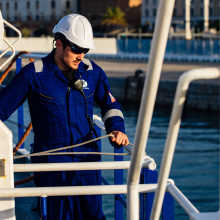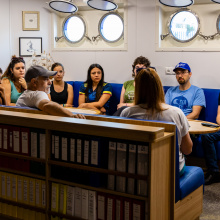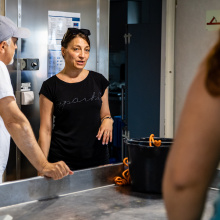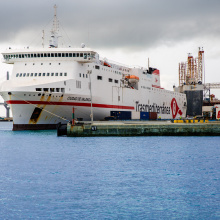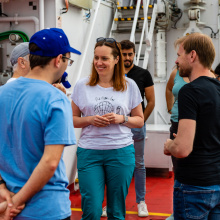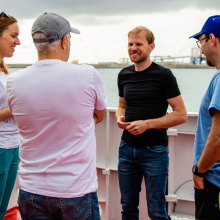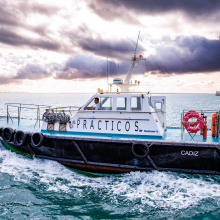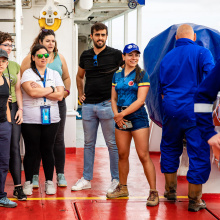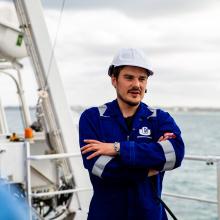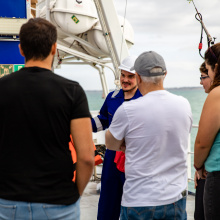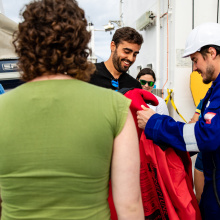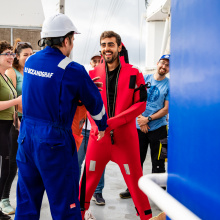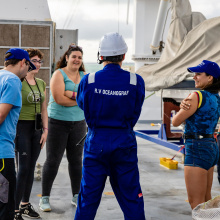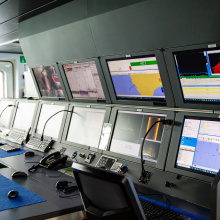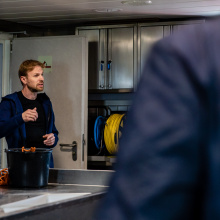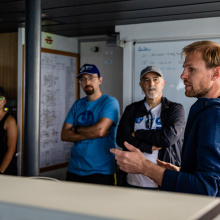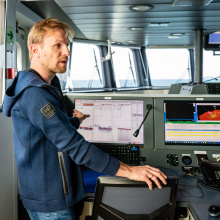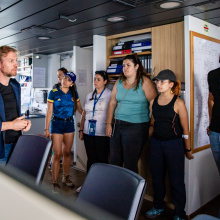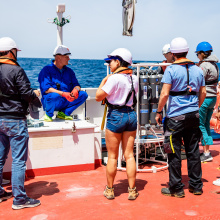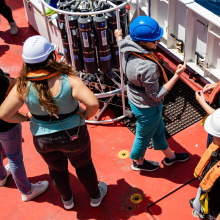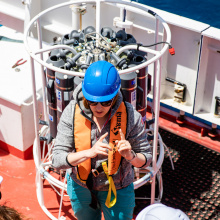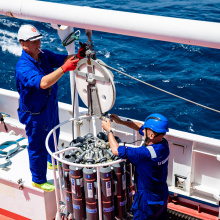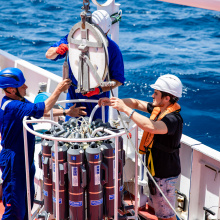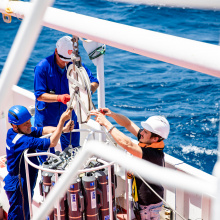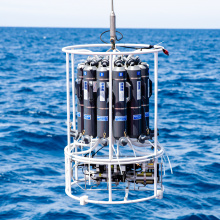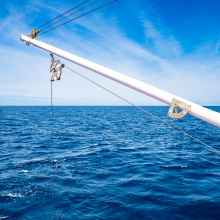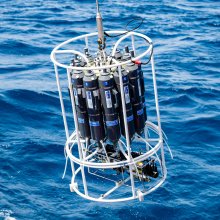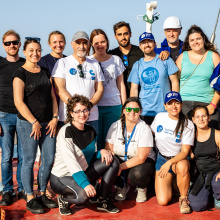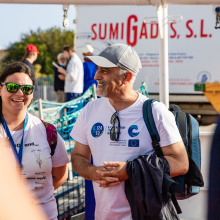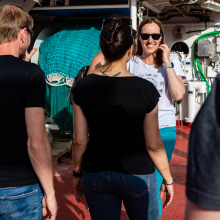
In order to photograph the second part of a research cruise as part of the SEA-EU consortium, I flew to Brest, a coastal town in France, on June 11. Our final destination was to be in Cádiz, Spain. Everything promised that it would not be easy for a 'freshman' like me to face a ten-day voyage photographing the struggles of those already seasoned with the elements. On everyone's lips hung the unspoken: "Biscay...".
THE BEGINNING
Saturday, 5 am taxi to the airport, Amsterdam, Paris, Brest and 11 hours on the road. The time was made more pleasant by KLM snacks and too much coffee for one man. Upon arriving at Brest airport, with more than 30 hours without sleep on the counter, I breathed a sigh of relief and, using hand gestures and screenshots of the map came to an agreement with an over-sympathetic local to share a taxi. Thanks to the gentleman in the straw hat, at least this time my wallet was almost tangibly relieved. Another moment and I was already standing on the deck of our university research vessel, which was to be my home for the next 10 days.
After a quick exchange of stories and learning the ship's etiquette with which my predecessor Marcel Jakubowski had introduced me, I took a shower and felt how tired I was, but not sleepy. Once you get past a certain point, sleepiness is a thing of the past, especially with the sun still hanging high in the sky at 11 pm. I shared a cabin with dr Jakub Idczak and we very quickly caught a common thread. Eventually, more out of compulsion than of my own volition, I closed my eyes and fell asleep.
BISCAY HERE I COME
As I have as much in common with ships as July has with school, I was a little apprehensive as to whether my stomach could cope with the Biscay waves. All the crew were already seasoned and I, a 'freshman', was to spend 10 days with them photographing their struggles with the elements. Everyone was concerned about the bad reputation of the Bay of Biscay, where waves can reach heights of several metres. The group of scientists and the ship's crew proved to be very friendly and helpful. There were also three fellow Spanish researchers with us. At the start, I was given some tips on what to do in case my stomach refused to cooperate, but also a comforting forecast for the coming days. Waves of 1.5-1.7m are definitely not a Biscayan record, so it wasn't too bad. Below are some photos from the port of Brest and my first day at sea.
After the photo shoot (battling with the camera and a straight horizon while the 'deck' lives its own life), I had to lie in the cabin until 5 pm because I was uncomfortable, and my stomach was churning with the rhythm of the waves, which my brain interpreted definitely to my disadvantage. After a day's acclimatisation, something shifted and, as if by magic, my stomach was tweaked to the 'sea wolf' model, which I accepted with great relief. The same could not be said for my legs; by the end of the voyage, I was to be walking sideways like a person who would fail a breathalyser test.
My deregulated biological clock and the nature of a night-owl ordered me to explore the ship with my camera before sunset and try to capture something. I took the opportunity to make my way to the bridge, where I spent the time until 2 am chatting to the crew, to the accompaniment of the waves and that constant rocking. Fascinated, I listened to the officer telling me about all the gauges, screens, controls and buttons. This is how I got to know the night shift and confirmed that it was my favourite part of the day. I was lulled to sleep by the furtive lullaby of the suitcase flying in the wardrobe, obviously to the rhythm of the waves.
FULL CUT-OFF
Since setting sail, my smartphone, through lack of coverage, has become nothing more than a book reader. The time without the internet was a lifesaver for me. I had no idea that deprived of the constant barrage of information, I would become so calm and tranquil. Just the hum of the waves and the vibration of the engine: monotonous, steady, omnipresent. At the end of the day, one begins to vibrate to this rhythm, and the ship is the only guarantee that there is dry land somewhere far over the horizon. Perhaps you will admit, that one can find comfort in this.
The research began that day with a bang. Most of the research equipment you already know from previous reports was in motion. Below is just my lens' interpretation.
THE DOLPHINS OF THE BAY OF BISCAY
The next day, as I decided to read a book after my meal, dr Jakub Idczak burst into the cabin, alerting me that "there are dolphins". With my energy still high and no dolphins in my portfolio, I jumped off the bed, opened up the backpack with my equipment, and the camera itself, carried by muscle memory, twisted itself in my hands. Before my eyes were these beautiful sea creatures, frozen in a leap over the surface of the water. Like from the cover of NatGeo, only they were mine. A moment later, I was already standing on one of the prows with the rest of the expedition and I didn't waste a moment's thought. Out of reflex, almost instinctively, I set up my camera and started 'shooting', from one bow, the other, low, high, a true water safari. I'll admit that it's not an easy thing to do, the dolphins have been above the water for far less time than you might think, and the speed they develop is dizzying. They were racing our boat and, as if unwillingly, overtaking it, making a 'Biscayan show' in front of us.
NIGHT RESEARCH
On the night of June 14-15, there was late-night research. I went out earlier than the rest on deck to soak up the atmosphere. It's a bizarre feeling when the ship is well-lit, no one around, and just overboard begins endless darkness with the occasional seagull swooping over it, is it l'appel du vide calling? Armed with my camera, I tried to encapsulate this contrast and terror in a single frame. The deck livened up as we began our research and I felt distinctly relieved that I wasn't alone out there after all. We were quite lucky, the waters of the Ria de Vigo proved to be calm at night and working in such conditions was very bearable. Battling thick, pouring fog, we persevered until morning. Cádiz was still two days away.
CÁDIZ
Before arriving at the port of Cádiz, we had a series of research trips at the mouth of the Guadalquivir. Everyone was in a great mood due to the beautiful weather and the knowledge that we would soon be coming ashore with no movement underfoot. Coming into the harbour had something special about it, the sight of people fishing on the shore and those who decided to have a wild picnic on the breakwater... There was only one word burning red in my head: "sonder". That wasn't the end of the excitement for the day though, there was still an 'open day' waiting for us, a guided tour of the ship, local press and a visit from Professor Fidel Echevarria.
CÁDIZ (2 RESEARCH DAYS)
We spent the last two days doing research with students from Cádiz. After proper training on board safety rules, emergency behaviour, a tour of the ship, etc., we got to work. Those whose stomachs had retained their dignity participated in the research with great enthusiasm, watching the professionals at work and learning on 'live material', accompanied by the incessant Gdańsk heartbeat of the Oceanograf. I, on the other hand, being your eyes, had the honour to be there and not only see it but also feel it.
BACK HOME
5:40 in the morning, train to Seville, bus, 2 flights and 12 hours later I welcomed the airport tarmac in Gdańsk. Lech Walesa Airport greeted me with no checked-in baggage and an overbearing taxi driver who was downright angry with me for having to work. Still soaked in the smell of the plane, with bags under my eyes, sitting in this hostile taxi I took in a lungful of air, it tasted of Poland, I'm home - I thought.

